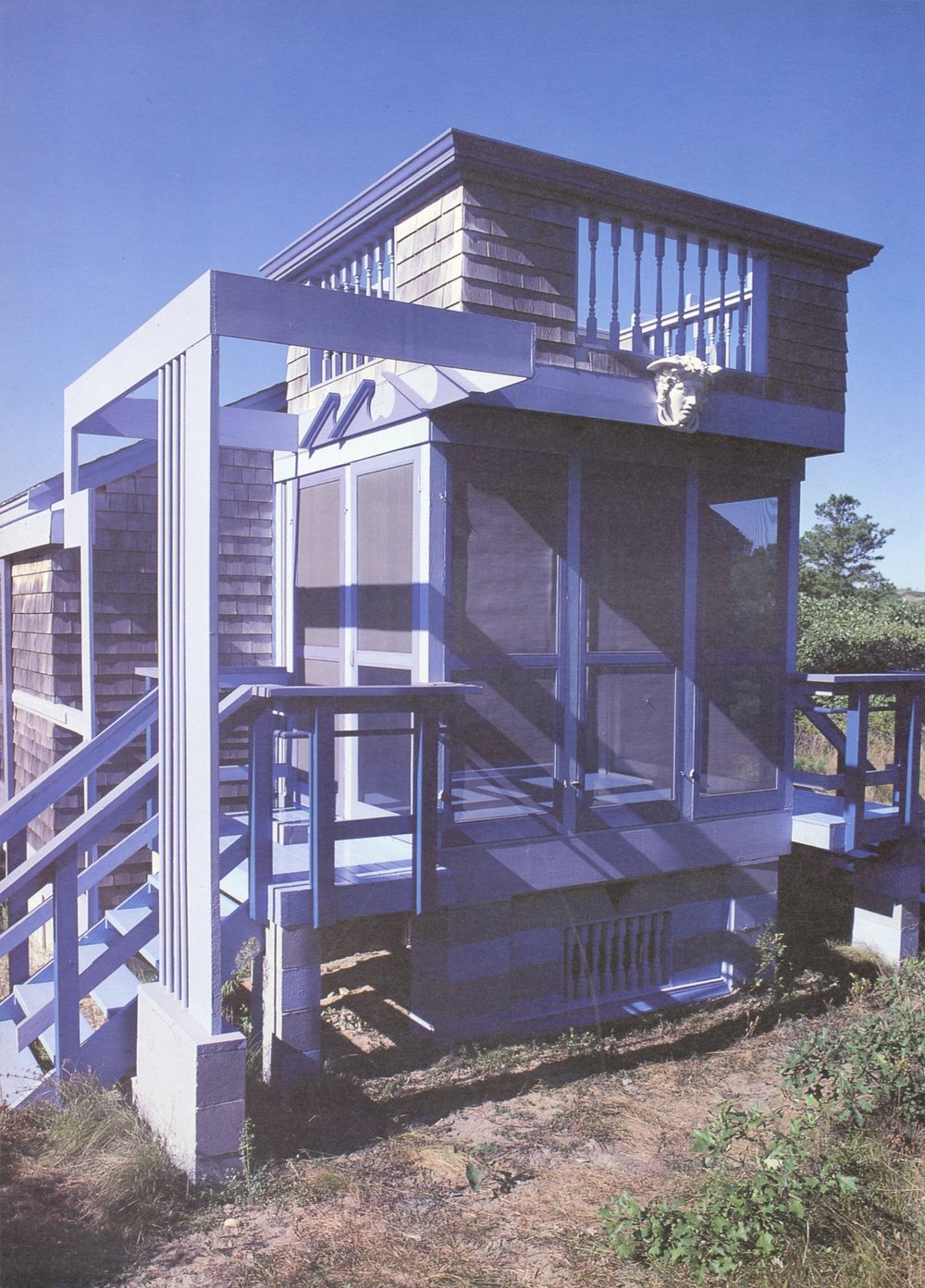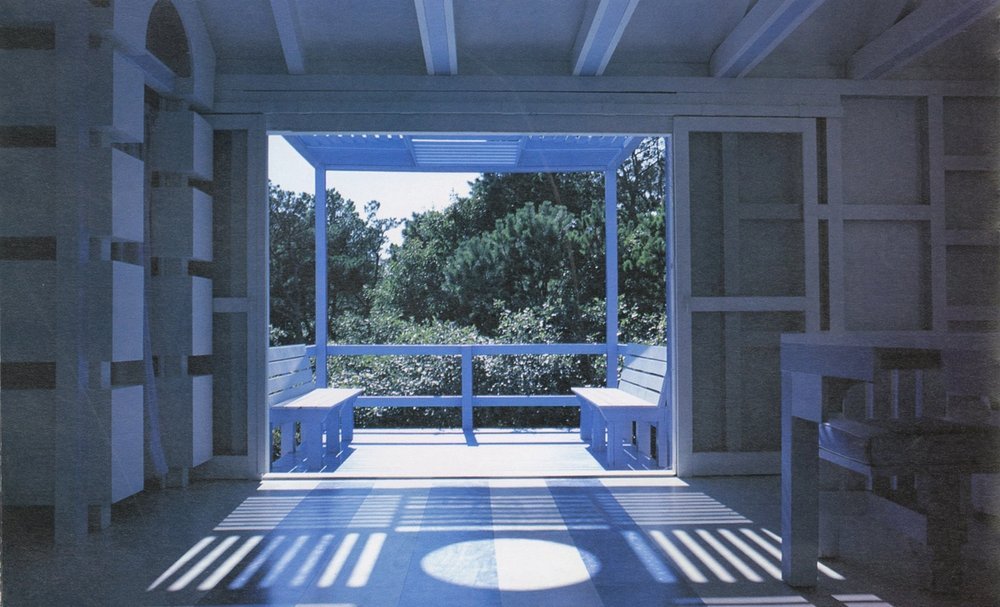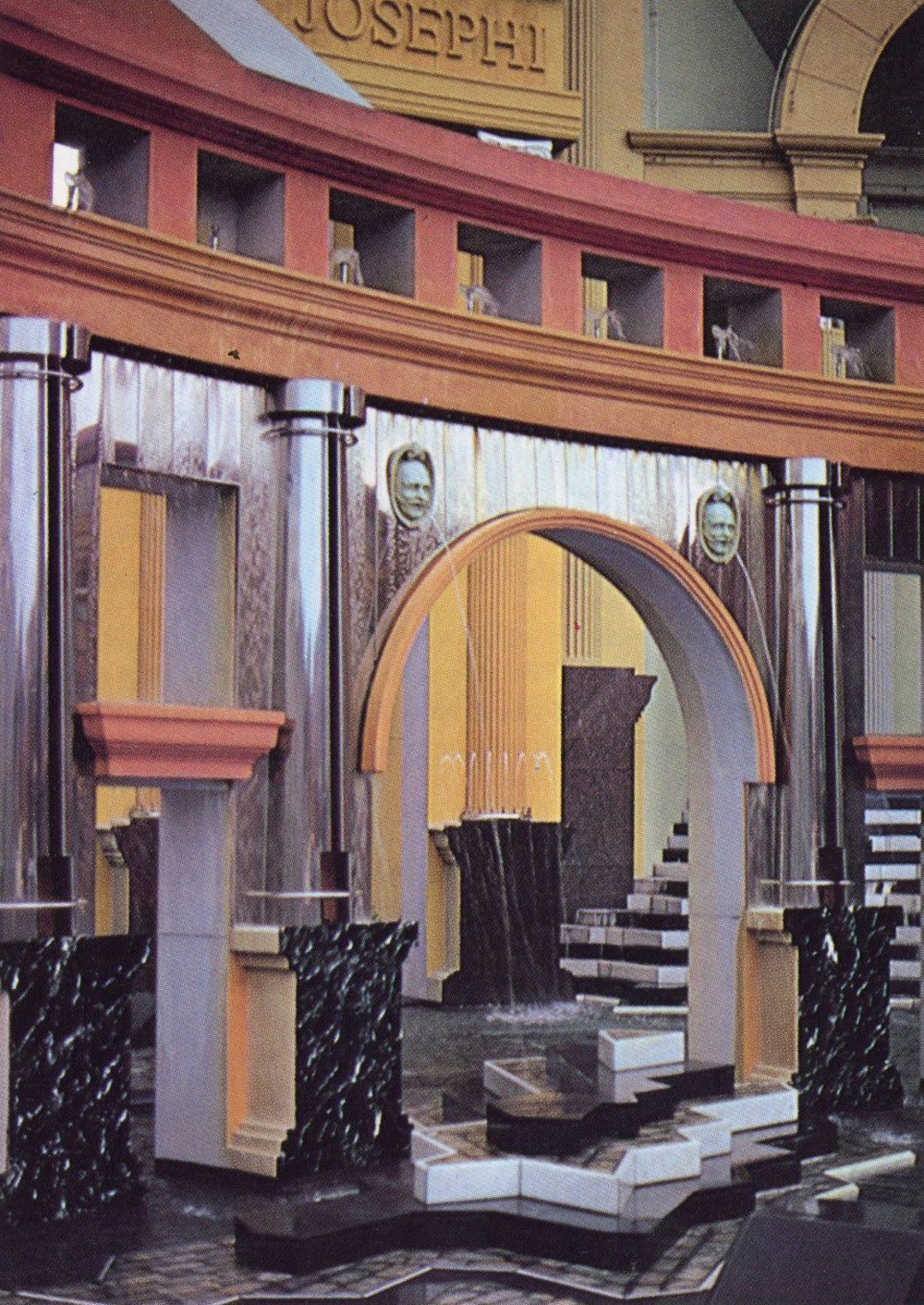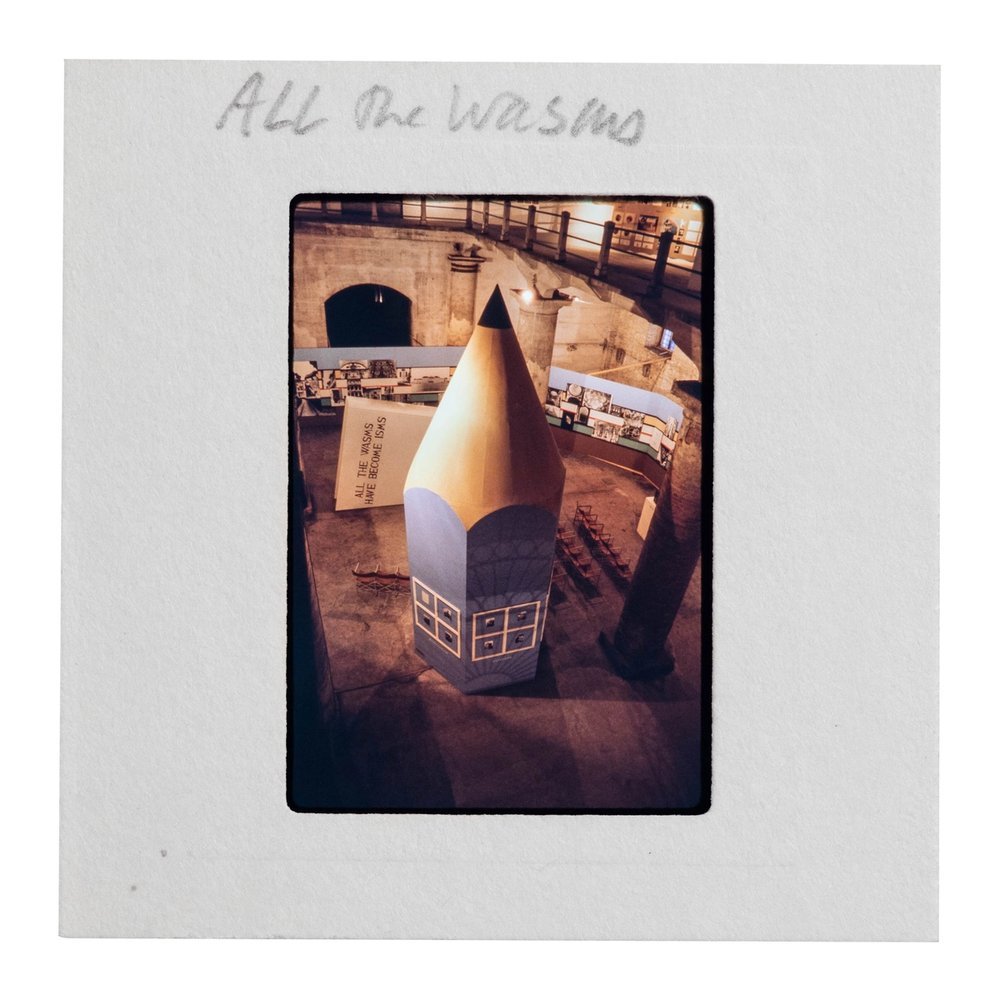The Presentness of the Past
Published for the Jencks Foundation, January, 2022
By Glenn Adamson
In 1977, in his seminal ‘Language of Post-Modern Architecture’ Jencks declared the death of modern architecture. For many decades to come, in seven subsequent editions of his book, he kept refining, mapping and diagramming his theory of Post-Modern. To revisit Jencks’ definitions of Post-Modern and debate their relevance to today’s architectural and broader culture, we have invited a number of authors – scholars, architects, curators, and writers – to respond to the question ‘What is/was Post-Modern?’ Glenn Adamson’s essay reflects on how the Post-Modern pluralist approach to culture has rearticulated our relationship to history, in the 1980s and today.
What is Post-Modernism? That’s a tough one… famously so. But here’s an equally good question: what isn’t it? Influentially defined by Fredric Jameson as ‘the cultural logic of late capitalism’, which already made it sound all-encompassing, the concept has been applied to our technology, our politics, our bodies, ourselves. We – or our avatars – traverse the frictionless glide paths of a massively connected attention economy. Pick your Post-Modern cliché (complexity and contradiction, the medium that is the message, the map that precedes the territory) and our everyday life seems to exemplify it.
Here’s the curious thing, though: when Jane Pavitt and I co-curated the exhibition Post-Modernism: Style and Subversion 1970 to 1990 at the Victoria and Albert Museum in 2011 (image), it was difficult for us to find anyone who would even admit to the label. [1] ‘Are you now or have you ever been a Post-Modernist?,’ we would joke, to be rewarded with a rueful grimace, and often, a finger pointed some other way. For the Italians, Post-Modernism was Michael Graves. For American architects, it was Memphis. For some, it was a far-flung global territory, with representative citadels in Singapore, Lagos, Doha, and São Paolo; for others, an entirely imaginary beast, nowhere to be found.
On one thing everyone could agree, however. Whatever Post-Modernism was or wasn’t, Charles Jencks had a lot to do with it. And we had a lot to do with him. Fortuitously for us, he lived just nearby the V&A, and we often went to see and speak with him, to behold the wonders of The Cosmic House, which always struck me as a walk-through mockup of his capacious brain.
The Cosmic House, London. ©Sue Barr
Uniquely associated with Post-Modernism, thanks to his quasi-coinage of it in the mid-1970s, he made little attempt to distance himself from the concept, though by that time his account of it was like an alluvial plain, silted by many seasons of accumulation and run through with tributaries. Our conversations flowed along those channels towards an open sea, in which one could get hopelessly lost.
Fortunately, we had a collaborative undertaking with Charles, which helped us keep focus. Jane and I decided that in the exhibition we would feature one of his earliest architectural projects: the Garagia Rotunda, built as his own home in Truro, on Cape Cod, in 1975.
Charles Jencks, Garagia Rotunda, 1975. Cape Cod. ©Jencks Foundation.
Charles Jencks, Interior of Garagia Rotunda, 1975. Cape Cod. ©Jencks Foundation.
It’s a masterpiece of what he called ‘double coding’, a highbrow/lowbrow collage of sly classical references – the name is of course a nod to Palladio – bricolaged together over the shell of a prefab garage using off-the-rack lumber, according to the principles he had established in his 1972 book Adhocism, authored with Nathan Silver. [2] Actually this was only partly principle and partly pragmatism, as in those days Charles had few means at his disposal. He completed the Garagia Rotunda for a grand total of about $5000, a sum that we vastly exceeded in our careful recreation of just a part of the building.
Charles found that hilarious, and rightly so. Our simulacrum inadvertently replicated the tendency of Post-Modernism to take on weight over time, its light-fingered wit replaced by ponderous officialdom. That happened, arguably, in the case of Graves – compare the cheap-and-cheerful insouciance of his Portland Building to his Swan and Dolphin Hotels, with their swaggeringly overbuilt Disney Dec.
Michael Graves, Portland Building, 1982. Portland, USA. Image: Courtesy Michael Graves.
Ditto for Charles Moore, whose breakout project, the Piazza d’Italia in New Orleans, the architectural equivalent of a big bowl of pasta with red sauce and cheese, is tastier by far than his later more academic buildings.
Charles Moore, Piazze d'Italia, 1978. New Orleans. ©Jencks Foundation.
This is what happened to the Post-Modern style in general, architecturally speaking. It began as a nimble tactic, a counterpoint to be played against the basso continuo of Modernist rationalism. In place of affectless glass and concrete, the early Post-Modernists proposed something funny and engaging, as various and individual as people are themselves. But it didn’t take long for a new kind of homogeneity to assert itself. Already by the late 1980s Post-Modernism had become the house style of corporate architecture; surface motifs were applied in a thoughtless cut-and-paste manner.
Charles reviled these later developments as much as anyone, but he didn’t think that they invalidated his initial instincts. Indeed, one could (and he certainly did) make a strong case that in 2011, the world was just catching up to him. From the outset, he’d maintained a certain distance from historicismin the narrow sense – the mining of ornament from the past, as indelibly manifested in Paolo Portoghesi’s curatorial project for the 1980 Venice Biennale, The Presence of the Past, and its centrepiece, ironically called the Strada Novissima (roughly, Extremely New Street). [3] This consisted of a series of façades by different architects, lined up edge-to-edge, each glossing a particular historical style. For the V&A exhibition, we also recreated Hans Hollein’s contribution to this project, itself a miniature compendium with allusions to the ancient garden, classical Rome, Art Deco.
Hans Hollein’s contribution to the Strada Novissima at the First Architectural Biennale in Venice, 1980. Slide from the Jencks Archive. ©Jencks Foundation.
Charles’ own contribution to Portoghesi’s exhibition was telling. A sort of critic’s corner, prepared with Yale historian Vincent Scully and theorist Christian Norberg-Schultz, it had as its centrepiece a giant stubby pencil, as if worn short from use, and slightly aslant, apparently in tribute to the Leaning Tower of Pisa.
Jencks Pencil / Critics Corner at the First Architectural Biennale in Venice, 1980. Slide from the Jencks Archive. ©Jencks Foundation.
On this Pop super-object was mounted a set of texts on various modes of Post-Modern operation: historicism, yes, but also straight revivalism, neo-vernacular, Charles’ own ad-hocism, and so on. The message, as ever with Charles, was the embrace of a thrilling pluralism, which he viewed as a way of articulating a new relationship to history itself. Coordinates in space, time, and culture are not forgotten or irrelevant, but they are rendered into what we might call ‘content’.
This means seeing the past not just as non-linear, nor even as multiple, but effectively simultaneous as it presents itself to us. The past, in Charles’ Post-Modern view, is a non-hierarchical array, ‘a Darwinian evolutionary tree’, as he put it in his contribution to our V&A catalogue, ‘but a fallen one where the branches grow sideways, or alternatively a sea of many streams’. [4] This is an extraordinary double image of Post-Modernism as also post-lapsarian, and anti-progressive, yet capable of fostering life: après nous le déluge, Charles seemed to say of his own generation, but all the better for successors, who wouldinhabit a newly permissive era. This was the key Post-Modern discovery, creatively speaking: like any information, an artistic trope can be recontextualised at will and in the aggregate this results in a vertiginous cascade of ever-evolving, fluid relationships, a perpetual return perpetually reconfigured.
That idea was mind-bending when Charles first proposed it, though he did so in relatively moderate language. In his breakthrough book, The Language of Post-Modern Architecture (1977), which established the term in architectural discourse, he described the ‘multivalent architecture’ of Moore, Lucien Kroll, Bruce Goff, and Venturi Scott Brown as ‘a pluralistic language which incorporates traditional and modern elements, vernacular and high art meanings’. So far, this sounds more tolerant than provocative, but he immediately pivoted to a more contentious tone:
If this pluralism is going to amount to anything it will really have to become more tough-minded. The architect will have to be trained in four or five different styles and trained as an anthropologist, or at least a good journalist… He will have to learn the particular metaphors and symbolic signs which have a short-lived potency, and the slow-changing traditional signs, and use all of these with wit and precision… The architect should be trained as a radical schizophrenic (everything must be radical today). [5]
These were fighting words, and they predictably outraged conservative standard-bearers, who objected to Post-Modern promiscuity. Eventually, this apparent authorisation of unconstrained appropriationhas come under fire by those who value cultural autonomy, as identity politics has taken centre stage in our art and our politics. Architects of the first Post-Modern generation helped themselves mainly to the debris of classical Europe; or else to local post-industrial vernaculars. These were relatively uncontentious moves. But the same pluralist methodology could equally be applied to other, less hegemonic cultures. That is exactly what happened in the context of the contemporaneous Pattern and Decoration Movement, an alternative Post-Modern pathway that has recently faced retrospective charges of cultural insensitivity. [6] The spectacle of white Americans laying claim (yet again) to traditions not their own, even in a spirit of celebration, is today rightly considered as problematic.
Installation view of With Pleasure: Pattern and Decoration in American Art 1972–1985, October 27, 2019–May 18, 2020 at MOCA Grand Avenue. Courtesy of The Museum of Contemporary Art. Photo by Jeff Mclane.
Yet in an age whose shape is given to it by Google search, which organises our thoughts based on algorithmic association rather than anything more ‘real’, the tendency toward pervasive, permissive simultaneity – call it the presentness of the past – is a tide that won’t easily be stemmed or diverted. You can see it above all in our politics, whose leading characters increasingly conform to Marx’s famous dictum about “world-historic facts and personages, who appear, so to speak, twice: the first time as tragedy, the second time as farce.” That is pretty much how Post-Modernism’s critics have always seen it. In my own field of museums, too, simultaneity has become an increasingly dominant mode, both in temporary exhibitions like the Museum of Modern Art’s contemporary painting survey Forever Now, in 2014, and in permanent collection installations, which are increasingly organised according to suggestive adjacencies rather than any one grand narrative.
Like any paradigm shift, the gradual envelopment of the cultural imagination by the Post-Modern condition has both benefits and disadvantages. Whatever one makes of the politics of appropriation, there are undeniably good things about cross-cultural mobility, which has always been the most potent counterforce to xenophobia. The Post-Modern citizen potentially inhabits a mental landscape without borders; perhaps the real landscape may eventually follow suit. Very much on the downside, though, simultaneity is – like so many other dynamics in our hyper-complex world – extremely confusing. It’s all too easy for content to get drowned in the flood, and for people to grasp at simplistic alternatives, slamming down the gates of their own curiosity. Insofar as it brought about these countervailing tendencies, Post-Modernism initiated a new phase of the culture war. It is inextricably linked to the concept of irony, and nowhere more so than in this: at a time when history is vastly more available than ever before, amnesia reigns and misinformation run riot.
All of which makes this an excellent time to reconnect with Charles and his work – both his writings and his extraordinary house. He never had all the answers, nor did he claim to. What he did have was ideas. And he laid them out abundantly, in a manner that could feel like an onrushing, intellectual sublime, but never became a free-for-all. As much as Charles was a spokesman for pluralism, he saw this not as a pathway to relativism, much less the nihilism we see so much of these days, but rather a more mobile and still humane intelligence. ‘Ultimately’, he wrote back in 1977, ‘it is the way a language is used that matters, the actual messages sent as much as the particular language used.’ [7] In the transformation of culture into freely available content, he saw a way to simply have a better, richer, more inclusive conversation. If that’s Post-Modernism, then it is indeed everywhere – and perhaps always will be, from now on.
Notes:
Adamson and Pavitt, eds, Postmodernism: Style and Subversion, 1970 to 1990 (London: V&A Publications, 2011).
Charles Jencks and Nathan Silver, Adhocism: The Case for Improvisation (New York: Doubleday, 1972; re-issued by MIT Press in 2013).
See Léa-Catherine Szacka, 'The Presence of the Past: Postmodernism Meets in Venice', in Adamson and Pavitt, eds, Postmodernism: Style and Subversion, pp. 133–135.
Charles Jencks, 'Post-modernism Comes of Age', in Adamson and Pavitt, eds, Postmodernism: Style and Subversion, p. 275.
Charles Jencks, The Language of Post-modern Architecture (New York: Rizzoli, 1977), p.97.
See Lynne Cooke, 'Pattern Recognition', Artforum (Oct. 2021); Glenn Adamson, 'Reassessing Pattern & Decoration', Art in America (Sept. 2019).
Jencks, The Language of Post-modern Architecture, 97.







